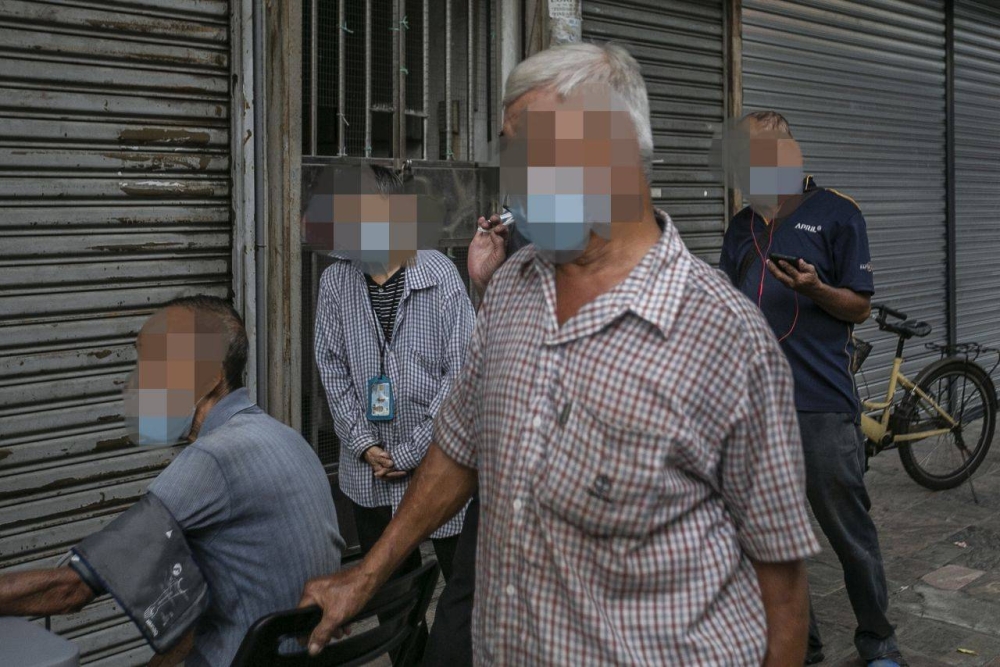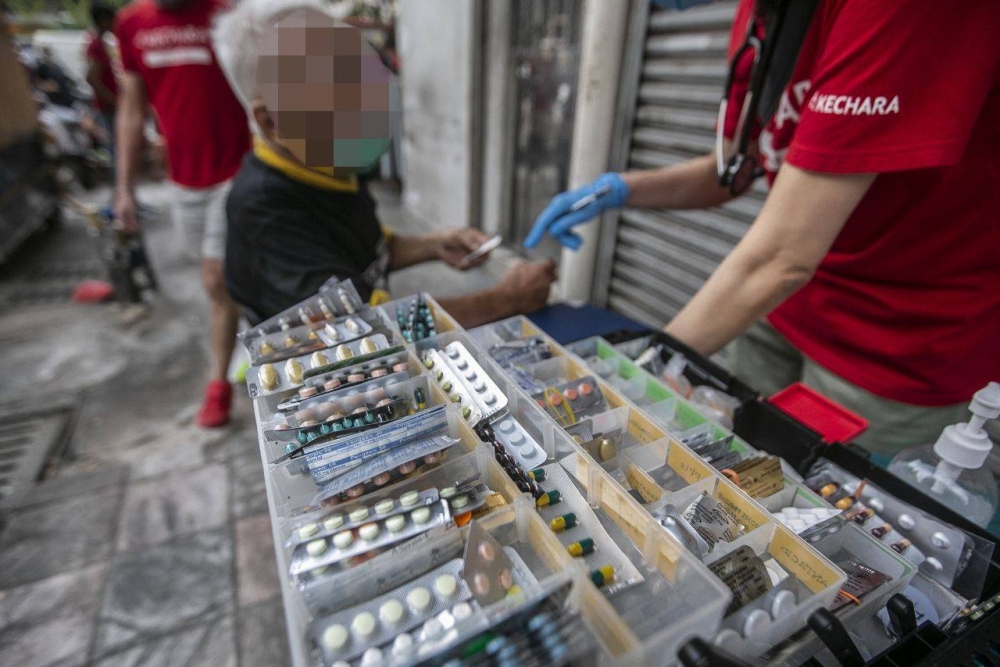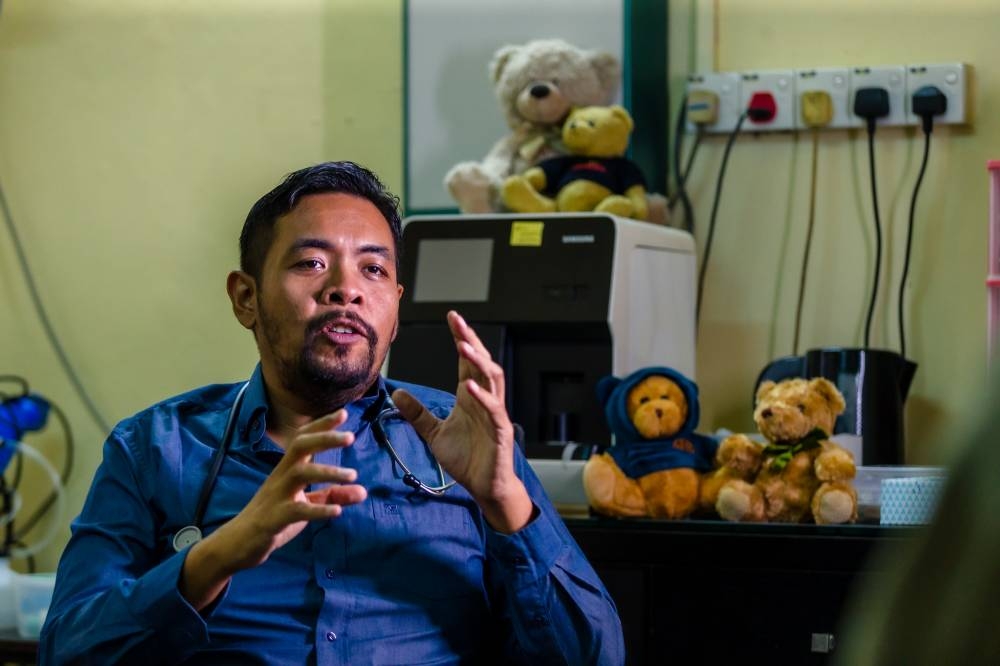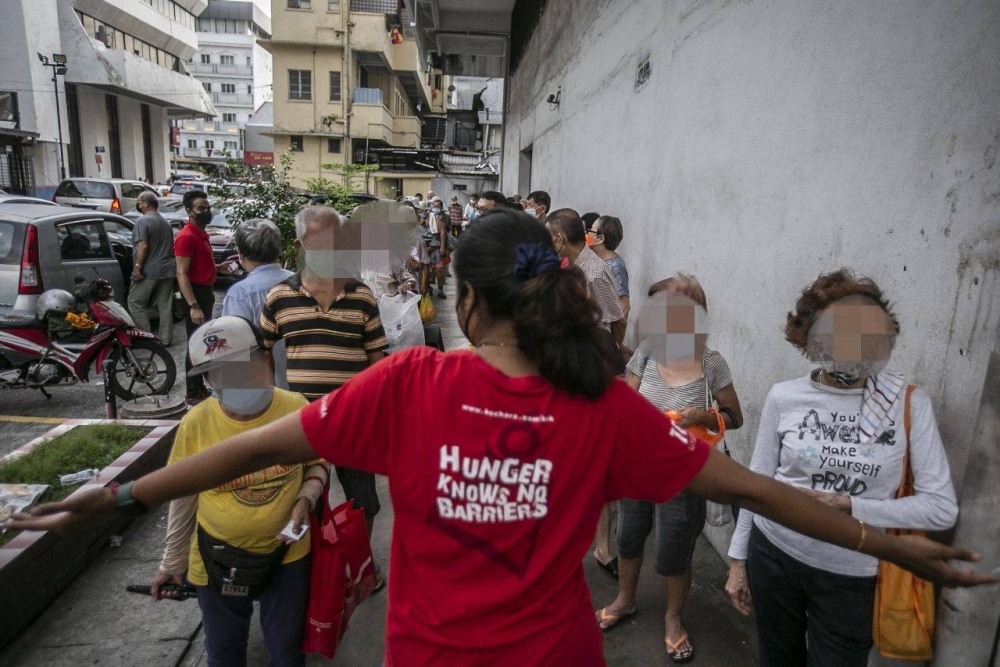KUALA LUMPUR, July 8 — Aunty Fern (not her real name) has been living alone in KL.
She normally takes shelter around the shop lots in the Pudu area as well as around the city centre.
With a trolley bag, she wanders around the city day in and day out just to collect recyclables to sustain her livelihood.
Aunty Fern, 72, also has diabetes and high cholesterol and she occasionally visits community clinics around KL for her medical needs.
“I’m old already, so it’s hard for me la. I’m jobless and I also don’t ask for any government welfare or anything.
“Yes, I’ve been collecting this (recyclables) to sell them. I get a bit of income from doing this la,” she said.
There is also Mat Noor (not his real name) who left his family and lives alone.
He is 69 years old.
Despite working as a janitor at a hospital in Cheras, Mat Noor struggles to keep up with living in the city, occasionally waiting at Jalan Hang Lekiu for food distribution from local non-governmental organisations (NGOs).
He also struggles with high blood pressure although getting his medications is not a problem as he gets them from the hospital where he works.
Uncle John (not his real name) is a 73-year-old man with diabetes living alone in Salak Selatan.
Uncle John usually depends on the RM500 monthly support via the Bantuan Warga Emas programme from the Welfare Department to pay for things like rent and food.
He usually goes to any nearby community clinics to get his medication and sometimes, he also goes to the mobile clinics set up by local NGO, Kechara Soup Kitchen (KSK).
These three people are examples of the elderly trying to make live out their years that have turned out to be less than golden.
They are either part of the urban poor or homeless.
And most times, when one reaches a certain age, they also have medical problems to deal with.
This includes non-communicable diseases (NCDs) such as diabetes, hypertension and high cholesterol.

According to the 2018 National Health and Morbidity Survey by the National Institute of Health, 79 per cent of older people in Malaysia have hypertension while 42 per cent were reported to have hypercholesterolemia (high cholesterol).
Another 28 per cent have diabetes.
KSK operations director Justin Cheah said there were currently around 1,300 to 1,500 homeless people physically living on the streets of KL and out of those, 40 per cent of them are aged 60 and above.
And according to data from KSK, at least 60 of them are living with NCDs.
“The numbers have been on the rise and we’re heading towards an ageing society as well. There’s more and more social problems here and there.
“We’re experiencing (seen) more family problems which result in some elderly being stranded on the streets.
“Some didn’t get married, they’re now at a later stage of their lives and are struggling to make an income to sustain their livelihoods.”

Medical help on the ground
Dr Madhu Shanmugam of the Teddy Mobile Clinic has been treating the homeless since 2015.
“On the streets, most of them have severe skin conditions and many other chronic illnesses like severe cough,” Dr Madhu said.
“Most of our homeless friends are undergoing a lot of stress, the poor living conditions is one of the reasons most of them have high blood pressure.”
Currently treating his patients at homeless shelters, the doctor has remained close to his patients, finding the reasons why they ended up alone.
“There are many people who’ve been neglected by their family members or have been chased away from their family members and hence they are there on the streets.
“There was this ‘uncle’, who was suffering from stage four colon cancer and his son and daughter-in-law were taking him for treatment at the hospital weekly.”
“One day he just finally decided and he left the family... . He said ‘Eventually, they will think I’m dead and they will not look for me anymore. But I do not want them to suffer just because of me.’”
At the frontlines of tackling healthcare for the homeless in the city are NGOs made of ordinary volunteers, medical students, and doctors.

Nicknamed the ‘Teddy Bear Doctor’ for providing teddy bears to homeless patients in his mobile clinic, Dr Madhu has dedicated his life to treating the poor.
“On a day-to-day basis, we usually went to the streets as referred to by the NGOs to provide food and medication.
“Since most of them were put in the shelter homes, the caretakers will give us a call when they need medical care, so we directly approach them.”
Although most of the homeless and elderly are in government shelters, organisations like KSK has found many still residing on the streets.
According to Dr. Ming Hui Ying, a volunteer doctor, KSK sets up operations in two stations, Medan Tuanku and Pudu every Saturday.
After receiving medical cases in their stations, the medical and food team will go mobile and walk the streets to cater to those that need medical aids living on the streets.
“We can see a total of anything between 50 to 60 cases a night in one Saturday,” she said.
Meanwhile, Cheah adds that KSK helpers have also advised the elderly homeless to eat healthier and have doctors teach them to take care of themselves.
“We wanted to make sure that they also must take responsibility for their own healthcare. So we try to instil that kind of education.” the director said.

Refuge and Rehabilitation
Aside from the elderlies living on the streets, there are also those currently being taken care of in shelter homes such as Casa La Obe 60 (CLO), a rehabilitation centre and shelter for drug users aged 60 and above in Jeram, Selangor.
CLO is one of the five shelters operating under the Malaysian Drugs Intervention Community (Komited) and they’ve begun operating since March this year with six residents and a house leader.
Abang Azizi, a former drug user and currently the man in charge of overseeing the six residents living at CLO, could not have been happier to be able to do the job of looking after his fellow peers.
“I came to Komited to build a new life for myself and to save myself from dying alone under the bridge or somewhere isolated,” Azizi told Malay Mail.
"Here, all of our needs are being taken care of and including myself. I have Hepatitis C and they will give me the time to go for my treatments and appointments.”
"In terms of taking care of the residents’ health, we know their medical intakes, so we need to keep an eye on them and remind them about their medicines and doctor’s appointments.”
Azizi added that he would usually help set the resident’s appointments via phone and he would often drive the residents to Hospital Sungai Buloh or the Jeram’s Community Clinic for their appointments.
Meanwhile, according to 72-year-old Tajul, a resident of CLO and a recovering drug user, said that he’s happy to be surrounded by friends who are the same age as him now that he’s in the later years of his life, he wishes to spend it peacefully.























